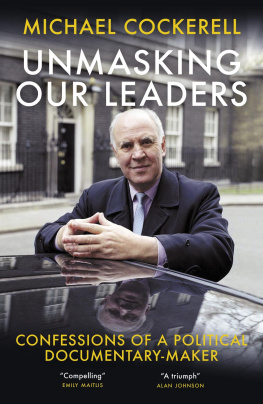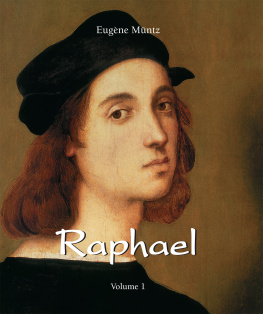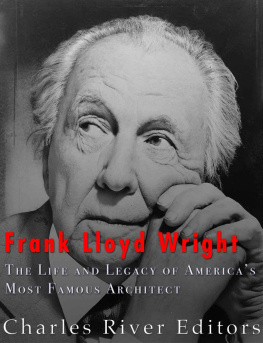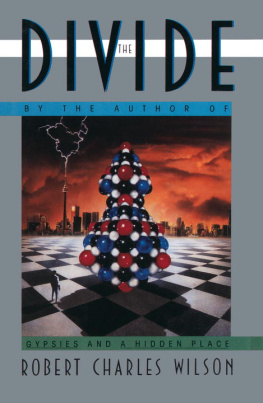CHARLES ROBERT COCKERELL, ARCHITECT IN TIME
Ashgate Studies in Architecture Series
SERIES EDITOR: EAMONN CANNIFFE, MANCHESTER SCHOOL OF ARCHITECTURE, MANCHESTER METROPOLITAN UNIVERSITY, UK
The discipline of Architecture is undergoing subtle transformation as design awareness permeates our visually dominated culture. Technological change, the search for sustainability and debates around the value of place and meaning of the architectural gesture are aspects which will affect the cities we inhabit. This series seeks to address such topics, both theoretically and in practice, through the publication of high quality original research, written and visual.
Other titles in this series
The Architecture of Luxury
Annette Condello
ISBN 978 1 4094 3321 7
The Architecture of Edwin Maxwell Fry and Jane Drew
Twentieth Century Architecture, Pioneer Modernism and the Tropics
Iain Jackson and Jessica Holland
ISBN 978 1 4094 5198 3
Reconstructing Italy
The Ina-Casa Neighborhoods of the Postwar Era
Stephanie Zeier Pilat
ISBN 978 1 4094 6580 5
Shoah Presence: Architectural Representations of the Holocaust
Eran Neuman
ISBN 978 1 4094 2923 4
Forthcoming titles in this series
Architecture in an Age of Uncertainty
Benjamin Flowers
ISBN 978 1 4094 4575 3
Marco Frascari: The Pleasure of a Demonstration
Roger Samuel Ridgway
ISBN 978 1 4724 4174 4
Charles Robert Cockerell, Architect in Time
Reflections around Anachronistic Drawings
Anne Bordeleau
University of Waterloo, Canada
ASHGATE
Anne Bordeleau 2014
All rights reserved. No part of this publication may be reproduced, stored in a retrieval system or transmitted in any form or by any means, electronic, mechanical, photocopying, recording or otherwise without the prior permission of the publisher.
Anne Bordeleau has asserted her right under the Copyright, Designs and Patents Act, 1988, to be identified as the author of this work.
Published by
Ashgate Publishing Limited
Wey Court East
Union Road
Farnham
Surrey, GU9 7PT
England
Ashgate Publishing Company
110 Cherry Street
Suite 3-1
Burlington, VT 05401-3818
USA
www.ashgate.com
British Library Cataloguing in Publication Data
A catalogue record for this book is available from the British Library.
Library of Congress Cataloging-in-Publication Data
Bordeleau, Anne, 1972
Charles Robert Cockerell, architect in time: reflections around anachronistic drawings / by Anne Bordeleau.
pages cm. (Ashgate studies in architecture)
Includes bibliographical references and index.
ISBN 978-1-4094-5369-7 (hardback: alk. paper)
ISBN 978-1-4094-5370-3 (ebook) ISBN 978-1-4724-0708-5 (epub)
1. Cockerell, C. R. (Charles Robert), 17881863 Criticism and interpretation. 2. Architecture, Modern Philosophy. I. Title.
NA997.C6B37 2014
720.92 dc23
2014010737
ISBN 9781409453697 (hbk)
ISBN 9781409453703 (ebk-PDF)
ISBN 9781472407085 (ebk-ePUB)
Contents
List of Illustrations
The author has made every effort to contact copyright holders and would be pleased to correct any errors or omissions that are brought to her attention, in subsequent editions.
COLOUR PLATES
BLACK AND WHITE FIGURES
Acknowledgments
The work is derived in part from research undertaken during my doctoral studies, under the guidance of Professor Adrian Forty. I wish to thank him first and foremost. I am also grateful to Dr Barbara Penner, also at the Bartlett School of Graduate Studies, as well as to my two external readers, Dr Dalibor Vesely and Dr Carla Yanni. In the seven years that have elapsed since the completion of my doctoral work, many friends, students and colleagues have contributed to the conversations and offered their continued support. I could not name them all, but certainly amongst them are Dr Robert Jan van Pelt, Professor Rick Haldenby, Dr Guan Lee and Paul Starr. For their support in the project, my thanks to my editors Valerie Rose and Dr Eamonn Canniffe, and for editorial work and assistance in the final stages of writing this book, I thank Pamela Casey. I am also grateful to The Paul Mellon Centre for Studies in British Art for awarding me a grant to acquire the many illustrations that form an integral part of the work. Finally, I would like to acknowledge that parts of the chapters presented here overlap with a contribution included in the book With Silence Implying Sound, An Anthology of Architecture Theory as well as articles published in Architectural History, Footprint 3, Footprint 7 (co-authored with Liana Bresler), The Journal of Architecture, and Architectural Theory Review.
List of Abbreviations
ARCHIVES
|
|---|
BL | British Library, London |
BM | British Museum, London |
CCA | Canadian Centre for Architecture, Montreal |
CUL | Cambridge University Library, Cambridge |
NAL | National Art Library, London |
NH | Natural History Museum, London |
RA | Royal Academy, London |
RIBA | Royal Institute of British Architects, London |
SM | Sir John Soanes Museum, London |
TCL | Trinity College Library, Cambridge |
V&A | Victoria & Albert Museum, London |
Introduction
The drawings of Charles Robert Cockerell (17881863) brush history against the grain. They resist the reductive arrow of time they are anachronistic. Consider Cockerells best known drawing: The Professors Dream (1849). This dream: a graphic lucubration, grounded in the calling forth of the past as embodied in architecture. At first glance, the beautiful drawing appears like a straightforward representation of chronological progress. It shows constructions from earliest times, lowest in the frame, and moves gradually through the Greek and Roman periods, whose structures occupy the center of the composition, to the most recent constructions of the nineteenth century upon an implied and highest fourth platform. But it is not that simple. In fact, Egyptian buildings appear on both the lower and upper platforms. Like Cockerell himself, who travels between different times to reconstruct from ruins and invent completed projects from unfinished constructions, these Egyptian buildings claim space in more than one time. In fact, none of the buildings represented belong to a single slice of time. Their foundations are in earlier constructions and prefigure the ones that will follow; these buildings are informed by their contexts and transformed as cultures and societies shift.
The Dream offers a daring if precarious positioning between potential pasts and futures, an effect that actually marks many of Cockerells drawings. A plate he published in 1860, from a sketch first drawn upon visiting a temple in 1812, becomes a device in which Cockerell brings different times at play (Plate 2). A study of the Ionic capital at Bassae emerges and re-emerges graphically and physically throughout Cockerells travels, practice, and publications, every new appearance richer from its previously accumulated iterations (Plate 5). Likewise, Cockerell composed his restoration and project construction drawings in such a way as to suggest interchangeability: one cannot tell if the envisioned project has been found to pre-exist in the site, if the ruined fragments are projected back into a possible past, or projected forward in a state in which they could have never existed (Plates 3 and 4). Cockerells drawings act as shifters that allow the observers to move through the making of architecture or the writing of history a process of construction as much as one of reconstruction and deconstruction.
Next page









